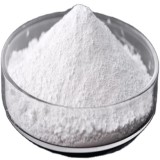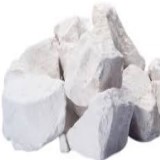 |
Quick Lime Calcium Oxide SDS Safety Data Sheet of Powder Lumps Supplier Exporter Manufacturers' Representative |
Email: info@ammol.org |
Call Toll Free +1-855-552-6665 |
Quick Lime Calcium Oxide Powder Lumps
CAS Number: 1305-78-8
Molecular Formula: CaO
Molecular Weight: 56.1


Quick Lime Calcium Oxide
Powder and Quick Lime Calcium Oxide
Lumps
Calcium Oxide SDS, Safety Data Sheet
MSDS Sheet, Material Safety Data Sheet 04-Feb-24
Section 1: Chemical Product and Company Identification
Product Name & Other Names:Calcium oxide or Quicklime or Lime
CAS#:1305-78-8
EINECS EC Number: 215-138-9
Relevant uses and uses advised against (if any): Industrial use only.
Supplier: American Molecules, 9910 Bent Oak Dr, Houston, TX 77040, USA.
Call Toll Free: 1-855-55-AMMOL 1-855-552-6665.
In case of emergency contact: Will be given with the supply.
Section 2: Hazards Identification
GHS, Globally Harmonized System Classification in accordance with 29 CFR 1910
Classification according to Regulation (EC) No 1272/2008
Skin corrosion/irritation Category 2
Serious eye damage/eye irritation Category 1
Specific target organ toxicity, single exposure; Respiratory tract irritation Category 3
Labeling according to GHS & Regulation (EC) No 1272/2008
GHS Label Elements Corrosive |
Signal Words: Danger
Hazard Statements:
H315: Causes skin irritation.
H318: Causes serious eye damage.
H335: May cause respiratory irritation.
Precautionary Statements:
P260: Do not breathe dust/fume/gas/mist/vapors/spray.
P262: Do not get in eyes, on skin, or on clothing.
P264: Wash … thoroughly after handling.
P270: Do not eat, drink or smoke when using this product.
P280: Wear protective gloves/protective clothing/eye protection/face protection.
P362: Take off contaminated clothing and wash before reuse.
P301+312: IF SWALLOWED: Call a POISON CENTER or doctor/physician if you feel unwell.
P302+352: IF ON SKIN: Wash with soap and water.
P305+351+338: IF IN EYES: Rinse cautiously with water for several minutes. Remove contact lenses if present and easy to do – continue rinsing.
P332+313: If skin irritation occurs: Get medical advice/attention.
P337+P313 If eye irritation persists: Get medical advice/ attention.
Section 3: Composition and Information on Ingredients
Product Name & Other Names:Calcium oxide or Quicklime or Lime
CAS#:1305-78-8
EINECS EC Number: 215-138-9
Section 4: First Aid Measures
Eye Contact: Check for and remove any contact lenses. In case of contact with Calcium oxide or Quick Lime, immediately flush eyes with plenty of water for at least 15 minutes. Cold water may be used. WARM water MUST be used. Get medical attention immediately.
Skin Contact: In case of contact, immediately flush skin with plenty of water for at least 15 minutes while removing contaminated clothing and shoes. Cover the irritated skin with an emollient. Wash clothing before reuse. Thoroughly clean shoes before reuse. Get medical attention immediately.
Serious Skin Contact: Wash with a disinfectant soap and cover the contaminated skin with an anti-bacterial cream. Seek medical attention.
Inhalation: If inhaled, remove to fresh air. If not breathing, give artificial respiration. If breathing is difficult, give oxygen. Get medical attention.
Serious Inhalation: Evacuate the victim to a safe area as soon as possible. Loosen tight clothing such as a collar, tie, belt, or waistband. If breathing is difficult, administer oxygen. If the victim is not breathing, perform mouth-to-mouth resuscitation.
Ingestion: Do NOT induce vomiting unless directed to do so by medical personnel. Never give anything by mouth to an unconscious person. If large quantities of this material are swallowed, call a physician immediately. Loosen tight clothing such as a collar, tie, belt, or waistband.
Section 5: Fire and Explosion Data
Flammability of the Product: Non-flammable.
Fire Extinguishing Media: Use water spray, alcohol-resistant foam, dry chemical or carbon dioxide. Use means suitable for extinguishing surrounding fire.
Explosion Hazards in Presence of Various Substances:
Risks of explosion of the product in presence of mechanical impact: Not available.
Risks of explosion of the product in presence of static discharge: Not available.
Special Remarks on Fire Hazards: Chlorine Trifluoride reacts violently with calcium oxide producing flame.
Section 6: Accidental Release Measures
Personal precautions, protective equipment, and emergency procedures: Ventilate area of leak or spill. Avoid breathing dust/fumes/gas/mist/vapors/spray. Use individual protective equipment (waterproof boots, suitable protective clothing, safety glasses, etc.). Restrict unprotected personnel from the area. Prevent any contact with hot surfaces. Do not approach facing the wind.
Environmental precautions: Do not let the product enter drains, soil, or water sources.
Methods and materials used for containment Cleanup procedures and Storage: Corrosive solid. Stop leak if without risk. Contain spilled material. Cover with an inert, non-combustible absorbent material, (e.g. sand, earth, diatomaceous earth, vermiculite). Vacuum or sweep-up and remove to an approved disposal container. Finish cleaning by spreading water on the contaminated surface and allow to evacuate as per law. Residues can be neutralized with a dilute solution of acetic acid.
Section 7: Handling and Storage
Precautions for safe handling: Never add water to this product. Apply according to good manufacturing and industrial hygiene practices. Ensure proper ventilation. In case of insufficient ventilation, wear suitable respiratory equipment. Wash thoroughly after handling. Do not drink, eat, or smoke while handling. Avoid contact with skin, eyes, and clothing. Minimize dust generation. Avoid breathing dust/fumes/gas/mist/vapors/spray. Avoid contact with eyes, skin, and clothing. Keep container tightly closed. Avoid ingestion and inhalation. Use individual protective equipment (waterproof boots, suitable protective clothing, safety glasses, etc.).
Conditions for safe storage, including any incompatibilities: Store in cool, dry, and ventilated area away from heat sources and protected from sunlight in tightly closed original container. Keep air contact to a minimum. Store protected from heat, sparks and ignition sources and incompatible materials. Avoid contact with skin and eyes. Avoid inhalation of dust/mist/vapor. Do not store with incompatible materials like organic materials, acids, moisture.
Section 8: Exposure Controls/Personal Protection
Engineering Controls: Use process enclosures, local exhaust ventilation, or other engineering controls to keep airborne levels below recommended exposure limits. If user operations generate dust, fume, or mist, use ventilation to keep exposure to airborne contaminants below the exposure limit.
Personal Protection: Splash goggles. Synthetic apron. Vapor and dust respirator. Be sure to use an approved/certified respirator or equivalent. Gloves.
Personal Protection in Case of a Large Spill: Splash goggles. Full suit. Vapor and dust respirator. Boots. Gloves. A self-contained breathing apparatus should be used to avoid inhalation of the product. Suggested protective clothing might not be sufficient; consult a specialist BEFORE handling this product.
Exposure Limits:
TWA: 2 (mg/m3) from ACGIH (TLV) [United States]
TWA: 2 (mg/m3) [Canada]
TWA: 5 (mg/m3) from OSHA (PEL)
Section 9: Physical and Chemical Properties
Appearance: White to off-white solid. Powder or lumps.
Odor: It is odorless.
Odor threshold: Not applicable.
Taste:Bitter. It can damage mouth tissues.
pH (1% soln/water): 10
Relative density: around 3.33
Boiling Point: 2850C (5162F)
Melting Point: 2572C (4661.6F)
Flash point: No data found.
Auto-ignition temperature: No data found.
Decomposition temperature: No data found.
Upper/lower flammability or explosive limits: No data found.
Vapor pressure: No data found.
Vapor density: No data found.
Evaporation rate: No data found.
Flammability (solid, gas): No data found.
Partition coefficient: n-octanol/water: No data found.
Solubility(ies): Soluble in acids, glycerol, sugar solution. Practically insoluble in alcohol. Very slightly soluble in cold water, hot water.
Viscosity: No data found.
Section 10: Stability and Reactivity Data
Stability: The product is stable. Avoid exposure to Air and Moisture.
Conditions of Instability: Incompatible materials
Incompatibility with various substances: Reactive with organic materials, acids, moisture.
Special Remarks on Reactivity:
Absorbs CO2 from air. Reacts with fluorine to evolve much heat and some light. Reacts with water. Addition of water to Quicklime has generated temperatures as high as 800 C. Some reports describe the reaction as violent. In water, calcium oxide forms calcium hydroxide generating a large quantity of heat. Ignition of sulfur, gunpowder, wood, and straw by heat of Quicklime-water reaction has been reported. Liquid hydrofluoric acid and calcium oxide react very violently. Calcium reacts with phosphorous pentoxide extremely violently when initiated by local heating. It becomes incandescent when heated to near its melting point (2500 C). Quick Lime when stored against brick wall is known to push off the wall.
Polymerization: Will not occur.
Section 11: Toxicological Information
Toxicity to Animals:
LD50: Not available.
LC50: Not available.
Carcinogenicity: No component of this product present at levels greater than or equal to 0.1% is identified as probable, possible, or confirmed human carcinogen by IARC.
Mutagenic Effects: No data found.
Teratogenic Effects: No data found.
Developmental Toxicity: No data found.
Reproductive Effects: No data found.
Section 12: Ecological Information
Toxicity to fish: LC50 - Cyprinus carpio (Carp) - 1.070 mg/l - 96 h
Toxicity of the Products of Biodegradation: The product itself and its products of degradation are not toxic.
Results of PBT and vPvB assessment: This substance/mixture contains no components considered to be either persistent, bioaccumulative and toxic (PBT), or very persistent and very bioaccumulative (vPvB) at levels of 0.1% or higher.
Section 13: Disposal Considerations
Waste Disposal: Waste must be disposed of in accordance with federal, state, and local environmental control regulations.
Section 14: Transport Information
Land Transport USA DOT:
Class 8: Corrosive material
Identification: Calcium Oxide UNNA: 1910 PG: III
Land Transport ADR/RID Europe: Not dangerous goods
Sea Transport IMDG: Not dangerous goods
Air Transport ICAO/IATA:
Un Number 1910
Class 8: Corrosive material
Identification: Calcium Oxide UNNA: 1910 PG: III
Section 15: Other Regulatory Information
USA:
SARA 311/312 Hazards: See section 2.
California Prop. 65 Components: This product does not contain any chemicals known to State of California to cause cancer, birth defects, or any other reproductive harm.
Section 16: Other Information
European Labeling in Accordance with EC Directives:
H315 = Causes skin irritation.
H318 = Causes serious eye damage.
H335 = May cause respiratory irritation.
DISCLAIMER: The information and recommendations set forth herein are presented in good faith and believed correct as of the date hereof. It is compiled from various sources, and it is not necessarily all inclusive nor fully adequate in every circumstance. In addition, these suggestions should not be confused with nor followed in violation of applicable laws, regulations, rules, or insurance requirements applicable. This SDS MSDS sheet is intended only as a guide to the appropriate precautionary handling of the material by a professionally trained person using this product. Individuals receiving the information must exercise their independent judgment in determining its appropriateness for a particular purpose. This shall not constitute a guarantee for any specific product features and shall not establish a legally valid contractual relationship. In no case shall our company be liable to loss or damages by the product user.
Please visit Main Page of Quick Lime Calcium Oxide Powder Lumps Suppliers.
American Molecules, also known as ammol.org is a distributor, supplier and manufacturers' representative of all types of Pharmaceuticals, Functional Ingredients, Excipients and Specialty Chemicals in Texas USA. Our principals manufacture supply and export USP NF BP, Ph Eur, etc grades of chemicals pure and reagent grade, mineral fortifiers, FCC food grade. Tailor made particle size and customized specifications are offered. The principal's facility is having one or more of the certifications like FDA approval and GLP, cGMP, ISO9001, ISO14001, ISO/IEC 17025, ISO22000, FSSC 22000, ISO45001, FSSAI, Kosher, HALAL, COPP, WHO-GMP certified and Written Confirmation (WC) for export to Europe is available. The manufacturers suppliers and exporters observe WHO Good Manufacturing Practices and Good Laboratory Practices.





Suppliers and Manufacturers' Representative:

9910 Bent Oak Dr
Houston, TX 77040, USA
Call Toll Free: 1-855-55-AMMOL 1-855-552-6665
Email: info@ammol.org